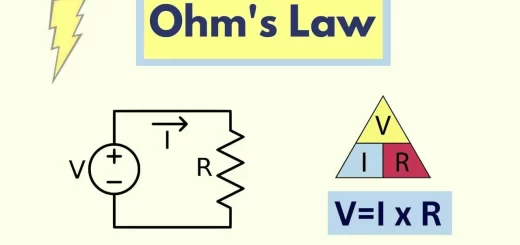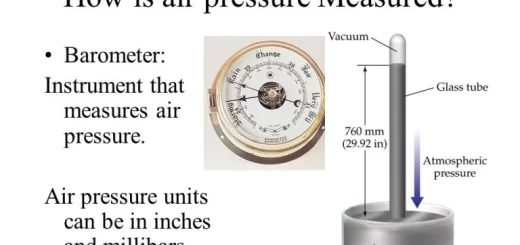AC circuit contains ohmic resistance, capacitor and inductive coil connected in series (RLC-circuit)
In an electric circuit containing an AC power supply together with inductive coils, capacitors and resistors, the AC current would be opposed by reactance (inductive reactance or capacitive reactance) in addition to the resistance of resistors and wires, The resistance and reactance together are called impedance and given the symbol (Z) and measured in Ohm (Ω).
Impedance
The impedance (Z) is the equivalent to the resistance, capacitive reactance and inductive reactance together in an AC circuit, When the impedance of the RLC circuit = 300 Ω, It means that the total opposition to the electric current in this circuit due to the resistance and the reactance of both the coil and capacitor = 300 Ω.
AC circuit contains ohmic resistance and inductive coil connected in series (RL – circuit)
It is almost impossible practically to construct an inductive coil with zero resistance because any coil must have resistance due to the wires used in its fabrication.
When an electric circuit contains an inductive coil, ohmic resistance and AC source connected in series, we noticed that the current passing through each of the resistance and the induction coil is the same in value and phase since they are connected in series.
But voltage in the coil (VL) leads current (I) by ¼ cycle (phase angle 90°) in the induction coil, the voltage in the resistance (VR) is in phase with current (I) in ohmic resistance.
The potential difference across a coil (VL) leads to the potential difference across the resistance (VR) by a phase angle 90°, thus the total potential difference is out of phase with the current intensity (I).
Total voltage can be found using the vectors from the relation:
V² = V²R + V²L
V = I Z , VR = I R, VL = I XL
( I Z )² = I² R² + I² X²L = I² ( R² + X²L )
Z ² = ( R² + X²L )
The phase angle can be determined between the total voltage (V) and the resistor voltage (VR) from the relation:
tan θ = VL / VR, tan θ = IXL / I R , So, tan θ = XL / R
AC circuit contains ohmic resistance and capacitor connected in series (RC-circuit)
When an electric circuit contains a capacitor, ohmic resistance and AC source connected in series, We notice that the current passing through each of the resistance and the capacitor is the same in value and phase since they are connected in series.
But voltage in the capacitor (VC) lags current (I) by ¼ cycle (phase angle 90°) in the capacitor, Voltage in the resistance (VR) is in phase with current (I) in ohmic resistance.
The potential difference across the capacitor (VC) lags the potential difference across the resistance (VR) by a phase angle 90°, thus the total potential difference (V) is out of phase with current intensity (I).
Total voltage can be found using the vectors from the relation:
V² = V²R + V²C
V = I Z , VR = I R , VC = I XC
I² Z² = I² R² + I² X²C
I² Z² = I² (R² + X²C)
Z² = (R² + X²C)
The phase angle (θ) can be determined between the total voltage difference (V) and the resistor voltage (VR) from the relation:
tan θ = − VC / VR, tan θ = − IXC / I R, So, tan θ = − XC / R
The negative sign means that the potential difference (VC) lags the potential difference (VR) by an angle of 90°.
AC circuit contains ohmic resistance, induction coil and capacitor connected in series (RLC – circuit)
When electric circuit contains capacitor, ohmic resistance, induction coil and AC source connected in series, We noticed that the current passing through each of the resistance, the induction coil & the capacitor is the same in value and phase since they are connected in series, But:
- In the induction coil, voltage (VL) leads current (I) by phase angle 90°.
- In the ohmic resistance, voltage (VR) is in phase with current (I).
- In the capacitor, voltage (Vc) lags current (I) by phase angle 90°.
The coil voltage (VL) leads the resistance voltage (VR) by angle 90° and the capacitor voltage (Vc) lags the resistance voltage (VR) by angle 90° and thus the phase difference between (VL) and (Vc) is 180°.
Total voltage ( V ) can be found using the vectors from the relation :
V² = V²R + ( VL− Vc )²
Where : V = I Z , VR = I R, VL = I XL , VC = I XC
I² Z² = ( I R )² + ( I XL − I XC)² = I² [ ( R )² + (XL − XC)² ]
Z² = ( R )² + (XL − XC)²
From the previous figure, the phase angle can be determined from the relation:
tan θ = ( VL − VC ) / VR
tan θ = ( XL − XC ) / R
The phase angle θ is affected by changing the values of capacitive and inductive reactance then when:
- VL > VC, XL > XC, The phase angle (θ) is positive, the total voltage (V) leads the current (I) by an angle (θ), That means inductive circuit behavior.
- VL = VC, XL = XC, The phase angle (θ) equals zero, the total voltage (V) is in phase with the current (I), That means ohmic resistance behavior.
- VL < VC, XL < XC, The phase angle ( θ ) is negative, the total voltage (V) lags the current (I) by an angle (θ), Which means capacitive circuit behavior.
The real consumed power (Pw) in AC circuit, either RL, RC or RLC is only the power that is consumed in the ohmic resistance in the form of heat energy.
Pw = I² R = V²R / R
Capacitive reactance of capacitor network, AC current and AC voltage in a capacitor circuit
The oscillating circuit, Tuning or resonant circuit in the wireless radio receivers



